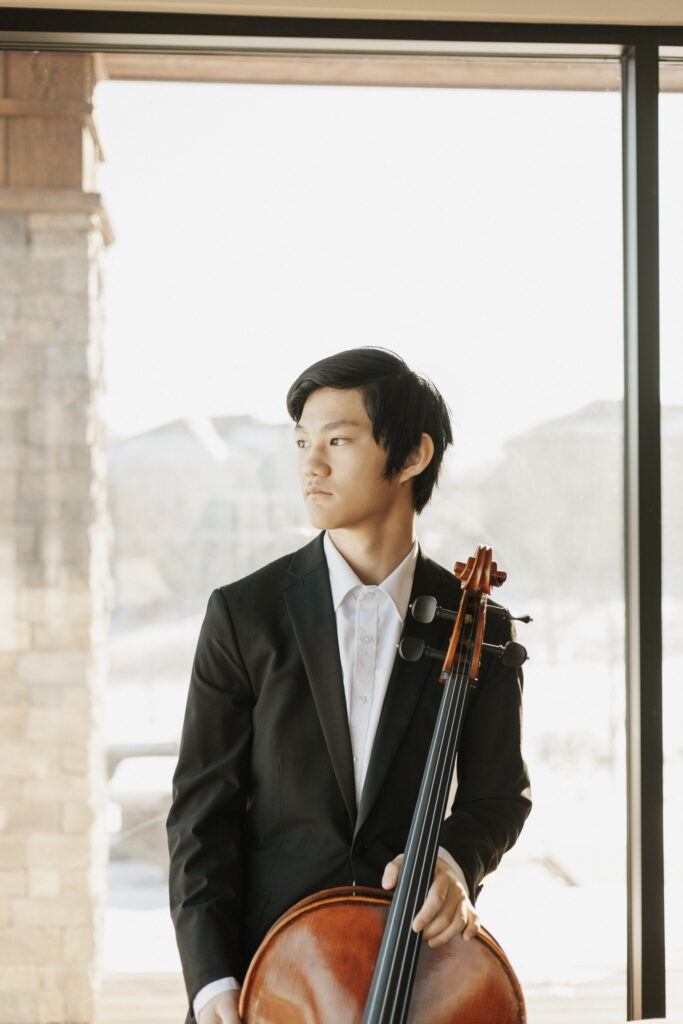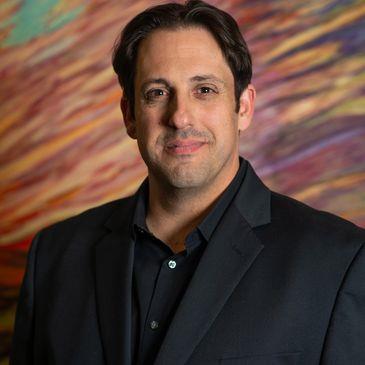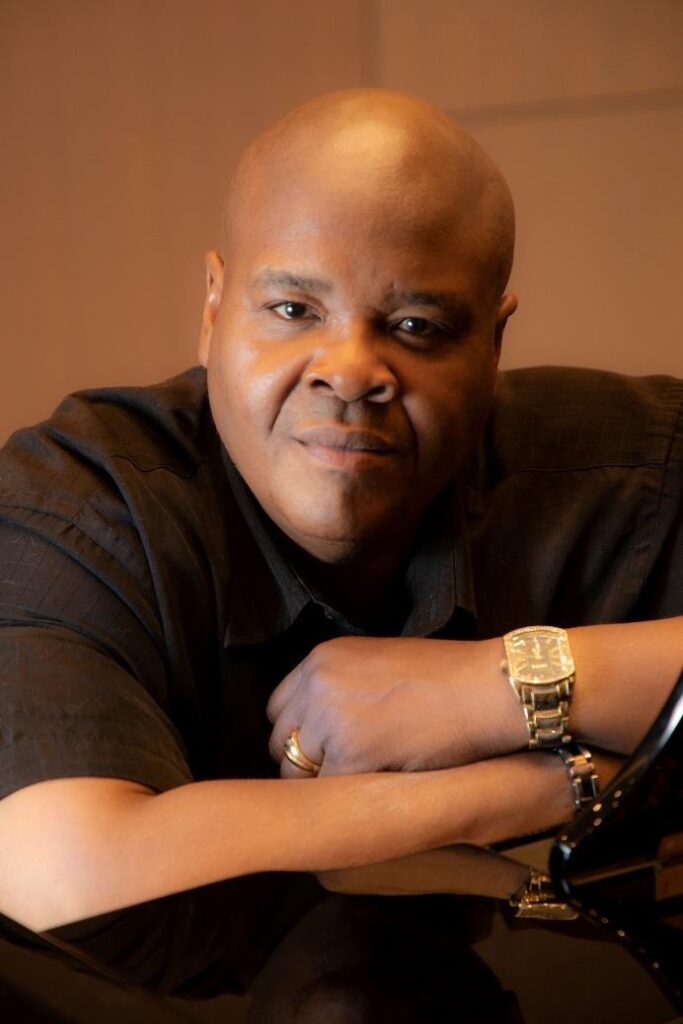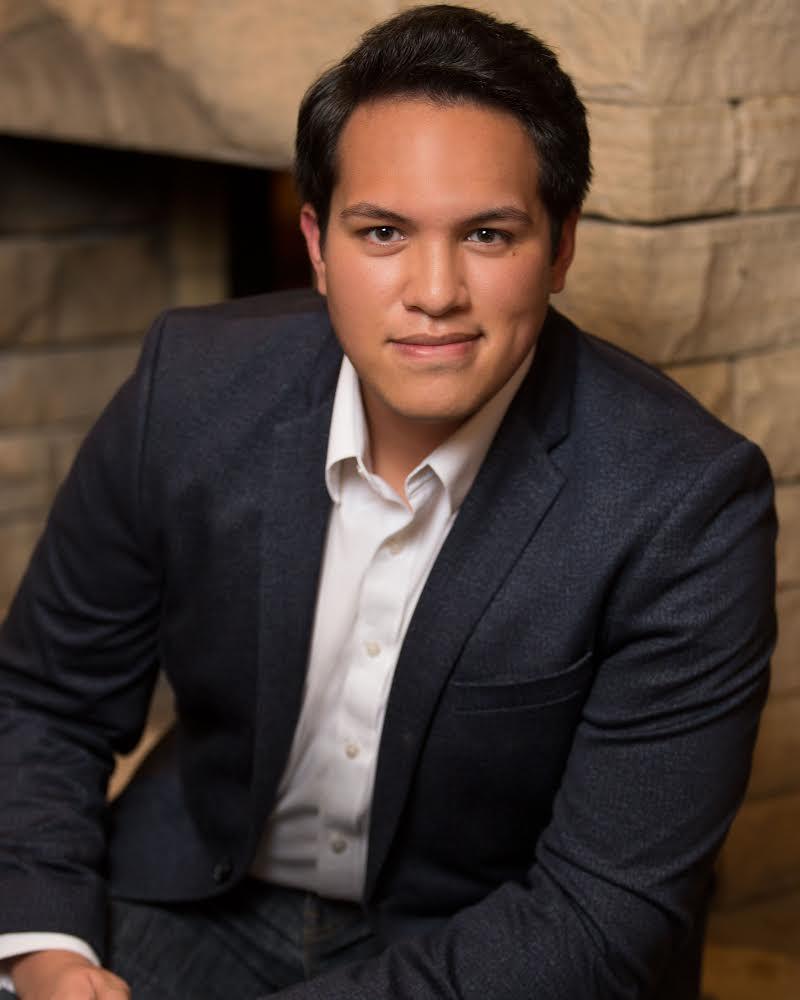Featuring Chatelain Young Artist John Lee and the William Jewell Cardinal Voices

Chatelain Young Artist Concerto winner John Lee is a 15-year-old sophomore at Blue Valley Southwest. He has been learning cello since 6th grade, currently under the tutelage of Susie Yang, Associate Principal of the Kansas City Symphony. He has performed in a masterclass taught by the world-renowned Quartetto di Cremona and played alongside Grammy-nominated saxophonist Tia Fuller in her 2023 world premiere of “Charlie Parker with Strings.”
John is a member of the self-formed young chamber group, the MJAW Quartet, and performs at various regional venues. His achievements include being a finalist in the KC Symphony Young Artist competition, receiving a full-year scholarship to the Heartland Chamber Music’s Young Artist Project, winning the Kansas City Young Chamber Musicians’ leadership award, and being the MTNA String Competition State Senior Alternate. He has participated in numerous ensembles, such as the Kansas All-State Full Orchestra, Youth Symphony of Kansas City’s (YSKC) Symphony Orchestra, the Heartland Chamber Music Festival’s Camerata Orchestra, and has performed at Carnegie Hall with YSKC.
Beyond music, John has a keen interest in science, particularly astronomy and astrophysics. He also engages in Track & Field with his school and won the Boy’s 110m Hurdles at the Junior Varsity EKL Championship his freshman year.
William Jewell Cardinal Voices
William Jewell Symphonic Choir Information
Anthony J. Maglione, director
Nicole Murray, Associate director
Treacey Johnson, rehearsal pianist
The William Jewell College Symphonic Choir pairs Cardinal Voices, Jewell’s large, non-auditioned chorus with members of Cardinalis, Jewell’s professional choir to perform large-scale masterworks.
| Soprano | Alto | Tenor | Bass |
| Enigma Addis Clara Bay Lee Clark Kelsey Coleman Payten Davis Sydney Edie Kaylen Fears Meghan Feeney Sarah Foote Lila Frazier Kelli Gilpin Aniya Glenn Bethany Holst Cameryn Jenkins Emma Johansen Bre Kristian Hannah Mayfield Naomi Medrano-Chavez Kristin Newbigin* Hayley O’Keefe Mia Page Kassidy Schmidt Kylie Schuster Jesse Sullinger* Claire Walker Rachel Wilper Lily Wilson | Elinor Babb Mars Beck Lillian Bogard Madison Britz Kailynn Byrne Mikayla Dolby Joanna Ehlers* Lily Frazier Brynesha Griffin-Bey Hannah Haley Elisabeth Hampl Madeline Hanna Jocelyn Hayes Ashlyn Helmich Allison Hillman Liliana Jackson Emma Kelly Anya Kuhn Lianna Morelli Victoria Morelli Chandler Pavel Cal Perkins Jordan Riley Carolyn Schrock Julia Sharp* Baylee Sidden | Celeste Abrahamson Matthew Bobela* Mekhi Brooks Gabe Conover Leo Edwards Keenan Haney Sa’Von Hayes Neal Long* Giuliano Lule Paredes Ethan Naber Caden Powell Isaac Robinson Spencer Ruwe* Cameron Smith Elijah Tang-Spigelman Marquis Williams | Kingston Allenbaugh Nathan Bills Ivan Calderon Christian Chamberlain JD Daniel* Ronnie Do Ronald Graves Andrew Ivy Ayden Jackson Nate Kiger Lukas Lockett Dustin McKinney* John Overfield James Rapstine Brayden Satterfield Felix Sumbu Blair Walker* Ron Witzke* Ian Wooldridge |

Anthony J. Maglione, Director, William Jewell College Symphonic Choir
Composer, conductor, producer Anthony J. Maglione is a graduate of Westminster Choir College, East Carolina University, and the University of California, Los Angeles. He is Director of Choral Studies and holds the Robert H. McKee Chair of Music at William Jewell College. Under his direction, the Concert Choir was twice named Runner Up (2nd Place) for the American Prize in Choral Performance, College/University Division, released two commercial recordings, and has appeared at state, regional, and national conferences. Choirs under his direction have appeared in concert with the American Spiritual Ensemble, The Boston Camerata, The Canadian Brass, The King’s Singers, and Mark Morris Dance Group.
In addition to his responsibilities at William Jewell College, he serves as Director of Music at St. Mary’s Episcopal Church in Kansas City and has served on the summer faculty of Westminster Choir College since 2011. A sought-after clinician, Anthony teaches workshops regularly and has conducted All-State and honor choirs in California, Kansas, Mississippi, Missouri, New Mexico, New Jersey, New York, and Pennsylvania.
Nicole Murray, Associate Director, Cardinal Voices
Nicole Murray is a graduate of William Jewell College with a Master of Music in Conducting from the Lamont School of Music at the University of Denver. In addition to working with the William Jewell College Cardinal Voices ensemble, she is also the Director for the Community School of Music program at the college, and music director at First Presbyterian Church, Independence. Ms. Murray is an active performer and soloist with William Jewell College’s Cardinalis professional choir as well as other choral ensembles and orchestras in the Kansas City area.
Todd Payne, Baritone
A native of Munford, Tennessee, District Winner & Regional Finalist of the Metropolitan Opera Auditions, and Tenured-Full Professor of Music/Voice at Missouri State University, Todd Payne’s baritone voice has been described as “Magnificent”, “Impassioned”, and “Stentorian.” He is sought after for his commanding presence, ringing tones and intense work ethic in opera, recital, oratorio, etc.
Recently, Todd portrayed the roles of The Old Uncle and The Duke in Ozark Lyric Opera’s production of The Black Rider. Prior, Todd was Fernando in Ozark Lyric Opera’s production of Fidelio. As an orator, Todd delivered his stirring interpretation of Rev. Dr. Martin Luther King’s “I Have a Dream,” Speech at Lebanon High School in celebration of their Black History Program. Following that program, Dr. Payne was invited back to the city of Lebanon, Missouri to speak about birth of “Amazing Grace, How Sweet the Sound,” as well as share with the city of Lebanon his singing of this great hymn. April 2023, Todd appeared as the baritone soloist in Ralph Vaughn Willliam’s Sea Symphony at the President’s Concert; under the baton of MSU Orchestra Professor Dr. Chris Kelts.
Oct 2022, Dr. Payne was heard as the bass soloist in Beethoven’s 9th Symphony with The Topeka Symphony. Prior to that he was guest soloist in Dubois’ “Seven Last Word of Jesus Christ. March 2022 sang the role of Tonio in Ozark Lyric Opera’s production of Pagliacci. June 2021 Todd portrayed the title role of Louis Armstrong in the Missouri premier of Dave Brubeck’s Jazz Opera “The Real Ambassadors” produced by Ozark Lyric Opera, at the Gilloiz Theatre. April 2021, Todd appeared as the guest soloist with Parkview High School’s orchestra in their performance of “The Nine,” written by Randall Standridge, in honor of the Little Rock Central Nine and the 60th anniversary of the integration of the Little Rock School System. February 2020 Todd, performed on a concert in Ft. Lauderdale, Florida honoring late Metropolitan Opera Diva Grace Bumbry.
Todd made his New York City Lincoln Center debut at Alice Tully Hall as the baritone soloist in a new premier work entitled “Gathering.” Todd performed this same masterpiece on the campus of University of Illinois Champaign-Urbana in celebration of the sesquicentennial anniversary of his alma mater.
Other notable performances include appearances with the Springfield and Topeka Symphonies (Verdi Requiem and Beethoven Symphony No. 9), Iago (Otello) and Malatesta (Don Pasquale) with Ozark Lyric Opera, and his first performance of The Real Ambassadors with Opera Memphis and Rhodes College. Todd performed the title role in Gershwin’s Porgy and Bess with the Princeton Opera Festival in Princeton, New Jersey and received the following excellent review:
“Richard Todd Payne conveys the spirit of his character, and the opera, before he even opens his mouth. You like this Porgy the minute he makes his entrance. Payne’s physical stature is of a piece with his spiritual resolve. There’s a solidity in his manner, and you just know there is nothing that will keep him down, totally at variance with his status as Catfish Row’s crippled beggar. When he sings “I Got Plenty o’ Nuttin’,” you believe icebergs would glance off the prow of this man, and you suspect the menacing Crown is in for a world of hurt!”
Other professional credits include performances with Opera Memphis, Indianapolis Opera, Illinois Opera Theater, Houston Grand Opera, Union Avenue Opera Theatre, Springfield Regional Opera, Santa Fe Opera, Opera Theatre St. Louis, Chicago Opera Theatre, Princeton Opera, Springfield Symphony Orchestra, Topeka
Symphony, Memphis Symphony, Champaign-Urbana Symphony, Danville Symphony, Eastern Illinois Symphony, Rockford Symphony, and the Memphis Youth Symphony.
Todd’s two favorite singers, who continue to inspire him to be the best, are the late Luther Vandross and the late Luciano Pavarotti. Besides his Strong Faith in God, Dr. Payne lives by the profound belief, which he instills in all of his students, that Practice does not make perfect, but Persistent Practice Prepares you for the Pursuit of your Predestined Purpose


Haekyung An, Soprano
Soprano, Haekyung An has performed leading roles such as Cleopatra in Handel’s Giulio Cesare, Susanna in Mozart’s Le Nozze di Figaro, Violetta in Verdi’s La Traviata, Mimi in Puccini’s La Boheme, Magda from Puccini’s La Rondine, Pamina in Mozart’s Die Zauberflöte and Blanche de la Force in Poulenc’s Dialogues des Carmélites.
She has performed with venues such as The Lyric Opera of Kansas City, the Marjorie Lawrence Opera Theater, Union Avenue Opera Theater, the Bay View Music Festival, The Southern Illinois Symphony, the Missouri State University Symphony, and the Kansas City Civic Orchestra. She enjoys an active schedule as a Soprano soloist both domestically and abroad.
Her voice has gained attention with reviews of her performances, such as La Traviata, where one reviewer wrote, “As Violetta, An was exquisite.” Another commented, “Her performance of “Sempre Libera” showed off her bright, flexible coloratura, but she was even lovelier during the following two acts… An is significantly talented.” (Petoskey News, MI). When not performing, Ms. An is the music department chair at Calvary University in Kansas City, MO, and enjoys an active teaching schedule.
She earned her Doctor of Musical Arts from the University of Missouri-Kansas City Conservatory of Music, Master of Music in Opera & Music Theater from Southern Illinois University-Carbondale, Master of Music, and Bachelor of Music in Vocal Performance from New England Conservatory of Music.

Jennifer Powell, Mezzo-Soprano
Soprano, Haekyung An has performed leading roles such as Cleopatra in Handel’s Giulio Cesare, Susanna in Mozart’s Le Nozze di Figaro, Violetta in Verdi’s La Traviata, Mimi in Puccini’s La Boheme, Magda from Puccini’s La Rondine, Pamina in Mozart’s Die Zauberflöte and Blanche de la Force in Poulenc’s Dialogues des Carmélites.
She has performed with venues such as The Lyric Opera of Kansas City, the Marjorie Lawrence Opera Theater, Union Avenue Opera Theater, the Bay View Music Festival, The Southern Illinois Symphony, the Missouri State University Symphony, and the Kansas City Civic Orchestra. She enjoys an active schedule as a Soprano soloist both domestically and abroad.
Her voice has gained attention with reviews of her performances, such as La Traviata, where one reviewer wrote, “As Violetta, An was exquisite.” Another commented, “Her performance of “Sempre Libera” showed off her bright, flexible coloratura, but she was even lovelier during the following two acts… An is significantly talented.” (Petoskey News, MI). When not performing, Ms. An is the music department chair at Calvary University in Kansas City, MO, and enjoys an active teaching schedule.
She earned her Doctor of Musical Arts from the University of Missouri-Kansas City Conservatory of Music, Master of Music in Opera & Music Theater from Southern Illinois University-Carbondale, Master of Music, and Bachelor of Music in Vocal Performance from New England Conservatory of Music.
Angelo Silva, Tenor
Soprano, Haekyung An has performed leading roles such as Cleopatra in Handel’s Giulio Cesare, Susanna in Mozart’s Le Nozze di Figaro, Violetta in Verdi’s La Traviata, Mimi in Puccini’s La Boheme, Magda from Puccini’s La Rondine, Pamina in Mozart’s Die Zauberflöte and Blanche de la Force in Poulenc’s Dialogues des Carmélites.
She has performed with venues such as The Lyric Opera of Kansas City, the Marjorie Lawrence Opera Theater, Union Avenue Opera Theater, the Bay View Music Festival, The Southern Illinois Symphony, the Missouri State University Symphony, and the Kansas City Civic Orchestra. She enjoys an active schedule as a Soprano soloist both domestically and abroad.
Her voice has gained attention with reviews of her performances, such as La Traviata, where one reviewer wrote, “As Violetta, An was exquisite.” Another commented, “Her performance of “Sempre Libera” showed off her bright, flexible coloratura, but she was even lovelier during the following two acts… An is significantly talented.” (Petoskey News, MI). When not performing, Ms. An is the music department chair at Calvary University in Kansas City, MO, and enjoys an active teaching schedule.
She earned her Doctor of Musical Arts from the University of Missouri-Kansas City Conservatory of Music, Master of Music in Opera & Music Theater from Southern Illinois University-Carbondale, Master of Music, and Bachelor of Music in Vocal Performance from New England Conservatory of Music.

Program Note for Symphony No. 9 in D Minor, op. 125 (Beethoven)
In the decade leading up to about 1812 Beethoven had enjoyed the most productive period of his life. He not only had composed well over two dozen major works—works that stand in the highest ranks of Western music—and many more other compositions in various genres, but he had changed the game of musical composition in lasting ways. Building upon the work of Haydn and Mozart, he crafted a musical language that would forever set the mark for those who aspire to a musical style that is founded in an unprecedented internal coherence, logical extension and exploration of tonality, and a remarkable economy of means. Moreover, he did so within a relentless exploration of formal, architectural structure, as well as developing a deep, expressive, lyrical and dramatic content. In essence—he had become the Beethoven who has hence stood in the exalted ranks of classical composers.
It was not without its personal price, however. In addition to the intensity of his busy life as a composer of works that constantly evolved in content and complexity, he faced constant pressures in coping with his loss of hearing, his wrangles with his family, his disappointments in personal relationships, and the never-ending hassles with publishers and impresarios. In short, by about 1812 there began a period of less productivity, of reconsiderations of the path forward in musical style–and just plain mental and physical fatigue. It was the beginning of a time that eventually led to what musical scholars have commonly referred to as his last, and third, stylistic period. While the works from this period are universally hailed by musicians as works of genius and unparalleled in their advanced style, it must be admitted that much of the concert-going public still has difficulty with appreciating the spare, often obscure, and abstract nature of many of these compositions. And yet, there is the Ninth Symphony, standing apparently forevermore in the smallest circle of almost everyone’s most beloved works of Beethoven. How is this possible? Is the Ninth Symphony not characteristic of the other works from this late, difficult period? Wherein lies the almost universal appeal?
Development of the symphony as a genre from the models left by the mature Haydn and Mozart to its position of central importance in the musical world was one of Beethoven’s greatest achievements. Discounting the derivative first two symphonies—as good as they are—the core of his symphonic achievements lies in the six symphonies of the aforementioned decade. He finished the eighth symphony in 1812 and about that time began a few sketches for the ninth. It is clear that at that juncture he did not envision the special place that the ninth would take in his oeuvre, but rather, it was just the next one, number nine. Work went more slowly, however, and even after the Philharmonic Society of London formally commissioned the Ninth Symphony in 1817, serious efforts did not begin until around 1822, with completion only in 1824, about three years before his death. A major element in the work, the novel and unprecedented incorporation of a choral setting of Schiller’s Ode to Joy poem, had actually been in the back of his mind since way back in 1793, but had not yet found its ultimate musical rôle for Beethoven. And, of course, he had composed the Fantasy in C Minor for Piano, Chorus, and Orchestra, op. 80 later, in 1808, as a “brilliant finale” for the concert which saw the premières of the fifth and sixth symphonies. There are many similarities between the Choral Fantasy and his setting of Schiller’s poem in the Ninth Symphony. They have always been clear to all, and the composer himself acknowledged the kinship. They include strong melodic and harmonic similarities between their respective main tunes, and a like idealism in universal human and artistic values expressed in the texts. So, all in all, there were lots of elements stewing in the pot during the long gestation period of this major work of his last years.
All of these elements came together in a work that was significantly different from the great six symphonies that preceded it. To be sure, the novelty of the choral finale, with four vocal soloists, was sufficiently path breaking. There was also a logical extension and development of technical elements in form
and texture, as well. But even lay audiences immediately sensed a more abstract, elevated, and deeper sense of spiritual “mission” from the outset.
The central idea of the symphony obviously stems from Schiller’s poem celebrating the universal brotherhood of mankind. But that celebration is not easily, nor quickly arrived at. Before the stirring words of the fourth movement, there is much psychological ground to be explored—and so the first three movements delve into darker reflections of the realities of existence. The first movement opens with a floating, ominous “cloud” of suspense whose exact tonality is fittingly indeterminate. But after sixteen bars, the main theme—a jagged and dynamic affair—appears in the central key of D minor. Other motives appear in constant parade—quite unlike many of his other works in which he literally works to death a single idea. This movement is rife with aphoristic, and eminently useful ideas, all contributing to a sense of unity, despite their multiplicity. The careful listener will find that as the movement constantly explores the stress, uncertainty, and challenge of making sense of existence, these motives pervade the musical fabric and carry the whole along. A further sense of unrest is generated by Beethoven’s tendency—a common one in his late works—to avoid the structurally reassuring contrast of tonic and dominant keys. Here, the tonal polarity is between D minor and Bb major—one of the composer’s favorite juxtapositions of keys. While there are many quiet moments (even in “happy” keys), the dark uncertainly pounds along all the way to a forceful conclusion—in which it might be said that nothing is actually “concluded” with regard to higher matters.
Conventionally, the fast, dance-like (or in this case, scherzo) movement is the third one, but in this case Beethoven chose to put it second. Like the beloved last movement, it has garnered a secure place in popular culture, even serving some years ago as the theme for the evening television news. And like the first movement, there is no joy in this one, either. It is a serious, hammering thing, driven by the timpani, which opens the movement with its signature rhythm. Usually, the formal structure of a scherzo is somewhat straight forward, but the composer chose here to employ the full sonata form, with its first and second theme groups, development section, and recapitulation—yet more evidence of the scale and importance that Beethoven imbued in the work. It is relatively easy to keep track of the main section and its repeats, for the composer has thoughtfully provided us with three bars of complete silence to mark them. The traditional middle section of a scherzo, the trio, here is unusual in that it is not only in duple meter (two to the bar), but is in the cheerful parallel major key—really, one of the first extended sections in the symphony thus far not in a minor key. After this diversion, the expected return to the first section occurs, but severely abbreviated, and after a quick allusion to the trio, a sudden ending surprises us.
The Adagio is a glorious example of Beethoven’s unequalled skill in evoking the transcendent. A leisurely exploration in anticipation of the “joy” of the last movement—and which has hitherto eluded us—it continues the delicious juxtaposition of the keys of Bb and D major/minor. After a brief introduction, the violins play the familiar theme in Bb, followed shortly by the other half of the main theme, but now in the other key. Two variations on these themes in various remote and refreshing keys constitute the body of the movement. A little fanfare-like figure introduces the coda, and after a bit more variation (Beethoven can never resist the procedure) this meditative episode is over.
The incorporation of a chorus in the last movement was simply unprecedented at the time, and still is remarkable. But then, a choral setting of Schiller’s poem is, of course, the raison d’être of the whole symphony. But how to transit into it after such a serious, long, and imposing three movements? That it gave Beethoven fits is well documented. He labored at many solutions before finding the way that seemed to make the whole affair a logical procession to the inevitable. And so the unique form of the last movement effects that end. The “roadmap” of the movement is varied and somewhat complex, but in the end it all makes sense and informs the sense of inevitability as it proceeds.
The movement begins with a fiery storm of agitation, quickly followed by the solo basses literally singing like an operatic bass, in the best of vocal recitative style, obviously taking over the show. The orchestra presents a short review of snatches of the first three movements—with the basses seeming to “reject” them. The basses,
which obviously have found the solution, present their idea, an intimation of the famous last movement’s tune. The real theme then appears several times, each with fuller harmony and orchestration. But, apparently, that’s not sufficient, and a human voice finally enters—to the tune of the original recitative by the basses and entreats all: “Oh, friends, not these tones!” More variations follow, this time in various combinations of vocal soloists and chorus, each one raising the emotional and musical stakes. At the climax it is all dramatically broken off at the words: “Before God!” What ensues is a kind of Turkish march that starts softly in the lower voices (including the distinctive contra-bassoon). This last variation gradually builds, helped by the interjections from the excited tenor and the men in the chorus. When the climax is reached, the voices drop out, and the orchestra zips into double fugue in the same bustling march rhythm. After a short, quiet transition the full orchestra and chorus blaze out with the main theme.
But, soon thereafter all slows down and the chorus and trombones dramatically intone the directive for the “millions” to embrace the earth below of the “common Father.” A short hymn-like passage then earnestly and reverently changes its mind, and suggests that all should “look upward” to the Maker’s mansion in the starry pavilions. In joy at this new understanding of mankind’s salvation, chorus, soloists, chorus, and orchestra plunge into the general celebration of that fact. Dramatic variants of tempo, texture, and familiar themes drive us to a conclusion that has few equals in all of music—and we are reminded, yet again, of why Beethoven, notwithstanding the human faults that he shares with us all, had the inimitable gift to point the way to human transcendence.
–Wm. E. Runyan
What were they singing…?
Translations for Symphony No. 9, Ludwig van Beethoven
| Freude, Schöner Götterfunken, Tochter aus Elysium, Wir betreten feuer-trunken, Himmlische, dein Heiligtum! Deine Zauber binden wieder, Was die Mode streng geteilt; Alle Menschen werden Brüder, Wo dein sanfter Flügel weilt. Wem der grosse Wurf gelungen, Eines Freundes Freund zu sein, Wer ein holdes Weib errungen, Mische seinen Jubel ein! Ja, wer auch nur eine Seele Sein nennt auf dem Erdenrund! Und wer’s nie gekonnt, der stehle Weinend sich aus diesem Bund! Freude trinken alle Wesen An den Brüsten der Natur; Alle Guten, alle Bösen Folgen ihrer Rosenspur. Küsse gab sie uns und Reben, Einen Freund, geprüft im Tod; Wollust ward dem Wurm gegeben, Und der Cherub steht vor Gott. Froh, wie seine Sonnen fliegen Durch des Himmels Prächt’gen Plan, Laufet, Brüder, eure Bahn, Freudig, wie ein Held zum Siegen. Seid umschlungen, Millionen! Diesen Kuss der ganzen Welt! Brüder über’m Sternenzelt Muss ein lieber Vater wohnen. Ihr stürzt nieder, Millionen? Ahnest du den Schöpfer, Welt? Such’ ihn über’m Sternenzelt! Über Sternen muss er wohnen. | Joy! A spark of fire from heaven, Daughter from Elysium, Drunk with fire we dare to enter, Holy One, inside your shrine. Your magic power binds together, What we by custom wrench apart, All men will emerge as brothers, Where you rest your gentle wings. If you’ve mastered that great challenge: Giving friendship to a friend, If you’ve earned a steadfast woman, Celebrate your joy with us! Join if in the whole wide world there’s Just one soul to call your own! He who’s failed must steal away, shedding tears as he departs. All creation drinks with pleasure, Drinks at Mother Nature’s breast; All the just, and all the evil, Follow down her rosy path. Kisses she bestowed, and grape wine, Friendship true, proved e’en in death; Every worm knows nature’s pleasure, Every cherub meets his God. Gladly, like the planets flying True to heaven’s mighty plan, Brothers, run your course now, Happy as a knight in victory. Be embracéd, all you millions, Share this kiss with all the world! Way above the stars, brothers, There must live a loving father. Do you kneel down low, you millions? Do you see your maker, world? Search for Him above the stars, Above the stars he must be living. |
